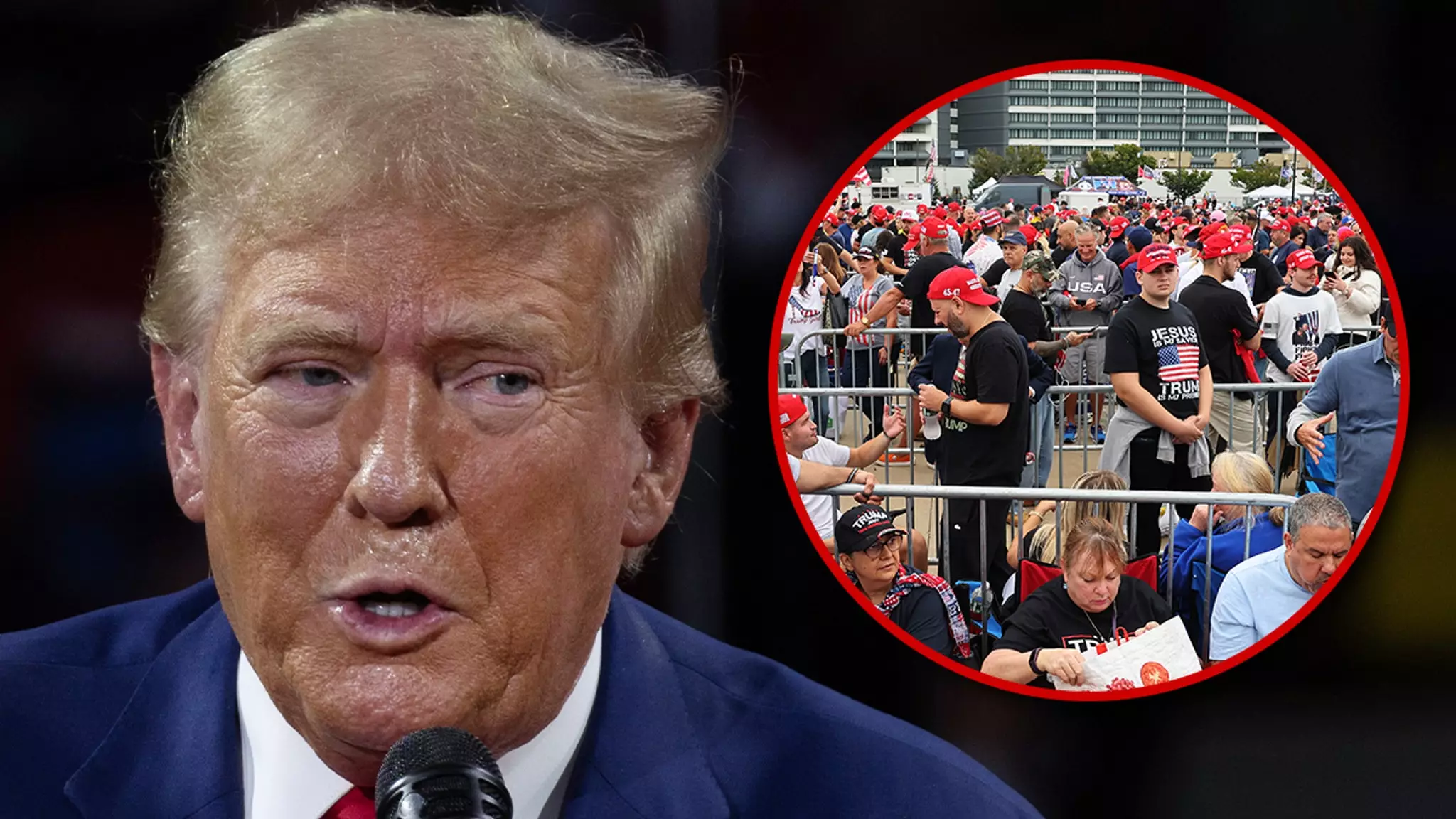In recent years, the landscape of political campaigning in the United States has taken a turn towards heightened tension and ever-present danger. This environment became glaringly evident as former President Donald Trump faced two serious assassination attempts in just a single year. The notion of a politician’s life being endangered during rallies or public appearances is a grave reality that has permeated modern politics. The recent threats to Trump, combined with alarming reports from the intelligence community, underscore an unsettling trend toward violence against public figures.
On a day when excitement buzzed in Long Island ahead of Trump’s rally at the Nassau Veterans Memorial Coliseum, journalist James Lalino brought forth a disconcerting report that the event’s security perimeter had been compromised. Allegations of a “blue barrel” being removed were paired with more alarming assertions that authorities had discovered an explosive device during a K9 sweep, supposedly prompting a chaotic escape by a driver involved. However, in what exemplifies the chaotic nature of information surrounding political events, correspondent Tom Winter quickly tweeted that these claims were inaccurate, revealing that multiple law enforcement sources confirmed no evidence of explosives.
This incident illuminates the critical challenge of ensuring accurate communication during politically charged situations. Misinformation can create panic, lead to unnecessary security escalations, and throw a wrench in the safety protocols designed to protect high-profile individuals. While Lalino’s report was not substantiated, it nonetheless contributed to an amplified state of anxiety for Trump and his entourage, already on edge following previous threats.
The anxiety surrounding Trump’s events is further exacerbated by a recent history of violence. Just days prior to the Long Island rally, a man named Ryan Wesley Routh was apprehended for allegedly attempting to ambush Trump while he was enjoying a round of golf in Florida. Carrying an AK-style rifle, Routh lurked nearby, highlighting the potential dangers facing politicians even in seemingly mundane settings. An earlier incident in July showcased this reality more graphically when 20-year-old Thomas Matthew Crooks was fatally shot by Secret Service agents after he opened fire during a Trump campaign rally. This alarming series of events emphasizes the increasingly hostile climate in which elected officials operate.
The repercussions of these threats extend beyond individual safety; they create a culture of fear that could deter public engagement in the political process. As we observe these dangerous trends, it is essential to reflect on the implications for democracy itself. The normalization of political violence risks dissuading potential candidates from entering the fray, thereby limiting the diversity of voices and ideas within political discourse.
The recent threats toward Donald Trump encapsulate a broader reality of violence that looms over contemporary politics. Politicians must navigate a perilous landscape, marked by both real threats and misinformation that can fuel panic and complicate security efforts. As we continue to witness these troubling dynamics unfold, we must advocate for a society where political differences can be addressed without resorting to violence, safeguarding the democratic ideals our nation cherishes.

